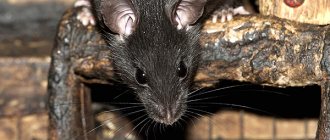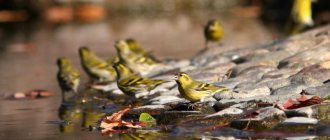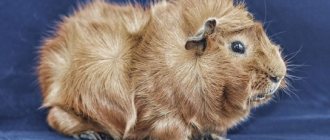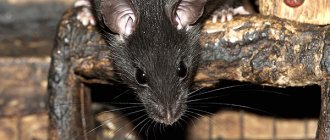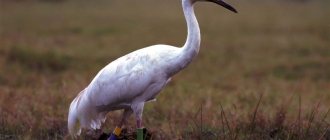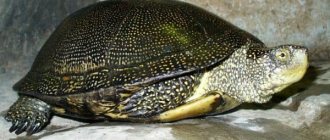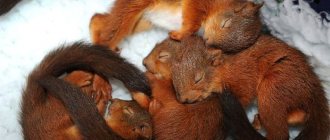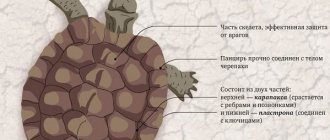The Chilean squirrel, or degu, is often called the “bush rat” because it does not live in tall trees. And although they look more like ordinary rodents, they are still classified as squirrels.
This animal has recently appeared as a pet, so a description of the degu’s lifestyle will help create suitable living conditions for it.
Characteristics of the Degu squirrel
Degus have a thick and short neck, a flattened nose and a small rounded head. The hind legs of the degus are longer than the front legs. The coat is hard, dense and has a yellow-brown or gray-brown color.
The Chilean squirrel can distinguish low-frequency sounds, has an excellent sense of smell, and is also able to see well up close and absolutely cannot distinguish distant objects.
Degus in the wild live only 4 years. However, with proper care and nutrition, this pet can live up to 8 years.
Pros of keeping degu squirrels at home
1. Degus are very active and inquisitive. They are able to become attached to their owner.
2. These animals do not require hygienic care and do not have a specific smell.
3. You need to clean the cage less often than when keeping other rodents, because degus drink little and, accordingly, do not produce a large amount of excretion.
4. Degus take up little space; small cages are enough for them.
5. The Chilean squirrel is mainly active during the day, so its owner can sleep at night without outside noise.
6. Degus consume much less food than larger pets.
7. Long life expectancy of squirrels compared to rats, chinchillas and hamsters.
How many individuals are recommended to be kept together?
The Chilean squirrel must communicate with individuals of its own species. When kept alone, she begins to get bored and make noise, as if calling for someone. The owners will have to spend much more time training the animal in this case. Keeping a pair of degus (provided they are the same age and gender) is a good idea.
To breed the Chilean squirrel, a group is formed (with a multiple predominance of females).
But this is not an easy matter; age restrictions will have to be taken into account. At 4 months and older, animals are already reluctant to perceive other individuals around them, and can show irritation and even aggression. Important: immediate relatives are not used for mating. Even if it goes well outwardly, the next generation may have weak immunity and even degenerate. In case of the slightest doubt, you should consult with specialists.
Disadvantages of keeping degu squirrels at home
1. Degus chew wires, furniture, and shoes. Therefore, when letting your pet out for a walk, you will have to make sure that it does not cause damage.
2. This animal loves to destroy. The owner needs to be prepared to constantly replace the interior of the cage.
3. Degu loves to bathe in sand, regularly pouring it outside the cage, so the owner will have to constantly clean up around it.
4. The Chilean squirrel is not as easy to tame as a cat or a dog. But if you show attention and patience, it becomes possible.
How to tame
It is easier to tame an immature individual, since with age they are more timid towards humans and practically do not make contact. The main strategy is not to rush the squirrel and do not expect quick results.
Before starting your acquaintance, choose a suitable place where there are no wires or holes so that the squirrel simply does not run away from you. First, try speaking quietly to the degu, let the squirrel get used to your voice. The gentle and quiet voice will soon be recognizable to her. Try feeding the animal by hand; of course, don’t expect it to happen right away, everything should be done gradually. Hands should be washed well before feeding, and after too.
Important! Never pick up a squirrel from above; in nature, they are attacked by birds of prey in this way, so your pet can suddenly turn into an aggressive animal and begin to defend itself.
Selecting and filling a degu squirrel cage
The cage should be made of stainless steel, as the pet will chew through the plastic walls. Also, the cage must be located away from drafts and exposure to sunlight. It is recommended to clean the cage once a week.
The following elements must be present inside the cell:
1) several bowls for food;
2) drinking bowls;
3) bedding (it is better to use white paper and sprinkle sawdust on it). Do not use hay or straw as bedding because degus may try to eat them and risk being poisoned by their secretions;
4) if you do not plan to walk your degus outside the cage every day, then you need to install a running wheel;
5) it is advisable to install hanging ropes, tunnels, ladders and additional tiers in the cage, because these animals are active and inquisitive by nature;
6) a special stone designed for grinding teeth;
7) bath for bathing in the sand;
 It is advisable to install a house and equip several holes, which the pet will use as a “shelter” (you can use unnecessary clay pots for this).
It is advisable to install a house and equip several holes, which the pet will use as a “shelter” (you can use unnecessary clay pots for this).
Housing
Particular attention should be paid to the squirrel’s home. The cage should be spacious - at least 70 cm in height, length and width. It is better to buy an iron cage, as the squirrel will quickly chew a plastic one. There must be a sufficient number of branches, roots and grains in it so that she can constantly gnaw on something.
Squirrels are very active, they need to constantly move, jump... so you can buy a wheel, usually they buy something that is suitable for chinchillas. It is not difficult to independently build small labyrinths and low stairs for active squirrels.
What should be in the cage:
- Hay;
- Sippy cup;
- Filler (wood, paper, pressed sawdust);
- Nest house;
- Wheel.
There is no need to place the squirrel’s home next to a radiator, window, or door. Let it be a quiet, inconspicuous corner where she will feel calm and comfortable, especially at first.
What should not be in a cage:
- A lot of toys;
- Glass;
- Dirt, garbage.
Feeding degu squirrels at home
Since degus cannot regulate their blood sugar on their own, they need to follow a diet. Therefore, it is necessary to provide the degu with a balanced diet that meets all its needs.
Chilean squirrels are herbivores, so in nature they feed on grass, bark and leaves, as well as grains and fruits.
Since it is problematic to provide such nutrition at home, the plants used by these animals for food grow only in South America. You can use special food or homemade formula to feed your pet.
Store-bought food can be ordered online or purchased at a pet store. Do not use rabbit food because it may contain additives that are contraindicated for degus.
If it is not possible to purchase commercial food, you can make a homemade mixture. To do this, you need to mix pea and oat flakes, as well as various cereals.
Also in the mixture must be hay, dandelion leaves or flowers, fruit tree bark, lettuce and fruit. Rowan or rose hip berries can be used as a treat.
To prevent your pet from feeling hungry and to digest food well, it is necessary to divide the daily portion into 3-5 small parts and give them to him throughout the day.
Degus should not be given fermented milk products and overripe fruits, as well as all food prepared for people.
Getting offspring
Adults are considered to be degus that have reached one year of age. However, squirrels that are only 50 days old can begin the mating process. For this to happen, the animals must be on good terms with each other. If the owner wants his pet to produce offspring, he needs to take care of a suitable pair in advance. You need to purchase an individual of the opposite sex and place it with the animal that already lives at home.
You should carefully observe the behavior of the couple, because it is possible that the female and male may not get along with each other. In this case, one of them may show aggression towards their partner.
If the animals do not fight and treat each other favorably, offspring can be expected. It is recommended to remove objects from the cage that could injure the pregnant squirrel or the babies she gives birth to. These include shelves with food and a wheel.
Individuals close in blood are not suitable for mating, since the squirrels may be born weak and sick. The most suitable partners are those who are six months old. After birth, the male is placed in a separate cage. This is done to prevent re-mating. The female is ready to bear a fetus and give birth no more than once a year.
Pregnancy lasts for 90 days, after which the birth process occurs. Usually 5-6 babies are born, but sometimes their number reaches 12. There are times when only one baby squirrel is born. 4-6 weeks after receiving the offspring, the small rodents are moved: boys into one cage, girls into another. If this is not done, the young individuals will begin to mate.
Health and diseases of degu squirrels at home and their treatment
Degus have fairly good health, but there are several diseases that they are prone to.
Baldness
Occurs due to abrasion of six, allergies, as well as as a result of poor nutrition and fungal infections of the skin. Usually this disease is easy to cure without any consequences for the pet. Treatment is aimed at eliminating the cause of baldness.
Conjunctivitis
This disease causes purulent discharge from the eyes. Antibiotic drops are used for treatment.
Cold
Colds in Chilean squirrels can occur as a result of temperature changes, drafts and swimming in water. Symptoms include nasal discharge, refusal to eat, lethargy, and watery eyes.
Veterinarians recommend treatment by washing the mucous membranes of the eyes, warm drinks and a calm environment.
Diabetes
Degus are susceptible to this disease at the genetic level. Symptoms include lethargy, weight gain and increased water consumption. The cause is most often poor nutrition. This disease cannot be cured.
The veterinarian determines the diet and recommends constantly monitoring sugar levels using a glucometer.
Gastrointestinal disorder
If you deviate from a “sugar-free” diet, the digestive organs are the first to suffer. Degus are not vaccinated because they are not prone to infectious and viral diseases. There is no vaccine suitable for vaccinating these animals.
Why her?
There are many other small animals!
- Because Chilean squirrels are unique. Few exotic animals are capable of learning and training. Degu - can follow simple commands and makes contact easily, unlike other rodents. She will become an excellent friend to the child, while demanding very little in return.
- Degus have an interesting appearance. They look like a mouse, a jerboa and a squirrel at the same time. Its size is small - about 30 cm. But there is more than enough activity in this small body! This cute animal loves to run around and stick its curious nose everywhere, almost purrs when it is petted and carried in arms, and happily responds to communication.
- The most important advantage of the degu is its tendency to diurnal lifestyle. How many rodents can boast of this? With this animal, you won’t have to sleep with a pillow on your head at night; it will sleep with its owner, and not instead of him!
- Chilean squirrels are long-lived, living about seven years with proper care and attention. So they are not suitable for those who want to take a “one-time toy”.
Training degu squirrels at home
Degus are well trained. To do this, you will need free time and treats. You can teach your pet several popular commands:
Here
Lure your pet to the right place with a treat and repeat the command. Soon the animal will begin to perform it without reward.
Bounce
Place your pet on your knee and lure the pet to the other knee with a treat, while repeating the command. After completing the command, reward the animal with a treat and stroke it behind the ear;
Dance
Take a treat in your hand and rotate it over your pet's head. When the degu spins after the treat, give it the treat. During the learning process, do not forget to repeat the command.
If you spend more time with your pet, you can quickly find a common language with him, and you can also teach him many commands.
Purchase
It's time to go find a new tenant. What do you need to know so as not to make a mistake in your choice?
Where can I buy
To the question: “Where can I buy a degu?”, the correct answer is: “Of course, in a pet store or from breeders!” There you can get comprehensive advice on growing, care and maintenance, and they will help you with choosing food and a cage for your pet.
Buying on the street or in the market is dangerous, because you won’t know for sure whether it is degu at all. And it’s easy to buy a sick animal, which in two days will die for some unknown reason. For the same reasons, you should not handle degus.
How to choose
You should choose a degu according to the following criteria:
- age is at least one and a half months, because until this time they still feed on mother’s milk
- living conditions for parents and children: clean cage, dry bedding, access to water and food
- nutrition, because if parents do not eat properly, then they may not have the healthiest offspring
- appearance - clean shiny fur, clear eyes, skin and ears are not red and without sores
- behavior, because degus are active animals, so degu squirrels should be active and not shy
- if the age is more than two months, then males should live separately from females
Degus reach sexual maturity early, so be careful not to buy a pregnant female. In general, experts advise keeping same-sex couples to avoid unplanned offspring.
Female degus give birth to a small number of children, but almost immediately the birth field is ready for mating again, and frequent pregnancies significantly undermine her health. Therefore, they are kept separately from the males so that the female can recover and calmly feed the offspring.
How many individuals is best to keep?
These little squirrels are gregarious, so it's best to keep a couple of them. If you have no plans for further breeding, then feel free to purchase two animals of the same sex and from the same flock at once. It will be easier and more fun for them together, and they will quickly adapt to life in a new home.
How to determine gender
If you know how this is done, then it is not difficult to determine the sex of a degu, especially if it is already a grown animal.
Raise the squirrel's tail. Below it you can immediately see the anus, but lower down you can see a protruding process. This is the urethra. It looks the same in both sexes.
And by the distance between it and the anus they determine what gender the individual is in front of you: the male will have it the size of a human little finger, but the female will have almost none.
Price
The price of a degu starts from three hundred rubles for one degu squirrel, but only the breeder himself will tell you how much a pair costs. But you need to take into account that you will also have to spend money on a cage, food, toys and bedding. So the total cost will be in the region of seven to ten thousand rubles.
Reproduction of degu squirrels at home
Only mature degus between the ages of one and five years can be allowed to breed. Chilean squirrels are very selective when choosing a partner, so after moving a male and a female into the same cage, you will have to be patient while the animals find a common language.
Females can become pregnant soon after giving birth, but in order to feed their offspring and produce new offspring, at least a year must pass between births.
Behavior
The behavior of degu squirrels when kept at home varies. They are cheerful, often even tame animals, but they are naturally shy and therefore behave warily, especially around people. There is no need to scare them with loud sounds, bright lights, grab them by the tail or sneak up from behind. A degu can jump up to 1 m in height and this is worth remembering, since if it is frightened, it can jump in the cage and get hurt.


